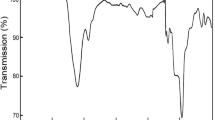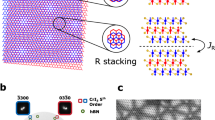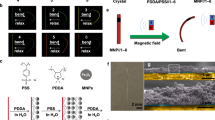Abstract
As has been shown by Krishnan1 and his collaborators, the study of the magnetic anisotropy of organic crystals enables us in many cases to determine the orientation of the molecules in the crystal lattice. A natural extension of this important line of work, suggested to me by Sir C. V. Raman, is the investigation of the effect of temperature on magnetic anisotropy, which may be expected to yield valuable information regarding the character of the thermal motions (for example, oscillations and hindered or free rotations) of the molecules in the crystal lattice and to elucidate the mechanism of fusion.
This is a preview of subscription content, access via your institution
Access options
Subscribe to this journal
Receive 51 print issues and online access
$199.00 per year
only $3.90 per issue
Buy this article
- Purchase on SpringerLink
- Instant access to full article PDF
Prices may be subject to local taxes which are calculated during checkout
Similar content being viewed by others
References
Krishnan, K. S., Guha, B. C., and Banerjee, S., Phil. Trans., A, 231, 235 (1933).
Robertson, J. M., Proc. Roy. Soc., A, 157, 79 (1936).
Lonsdale, K., NATURE, 137, 826 (1936).
Krishnan, K. S., and Banerjee, S., Phil Trans., A, 234, 265 (1935).
Hend ricks, S. B., Posnjack, J., and Kracek, E. C., J. Amer. Chem. Soc., 54, 2766 (1932).
Author information
Authors and Affiliations
Rights and permissions
About this article
Cite this article
NILAKANTAN, P. Temperature Variation of Magnetic Anisotropy of Organic Crystals. Nature 140, 29–30 (1937). https://doi.org/10.1038/140029b0
Issue date:
DOI: https://doi.org/10.1038/140029b0
This article is cited by
-
A New Form of Resorcinol
Nature (1937)



